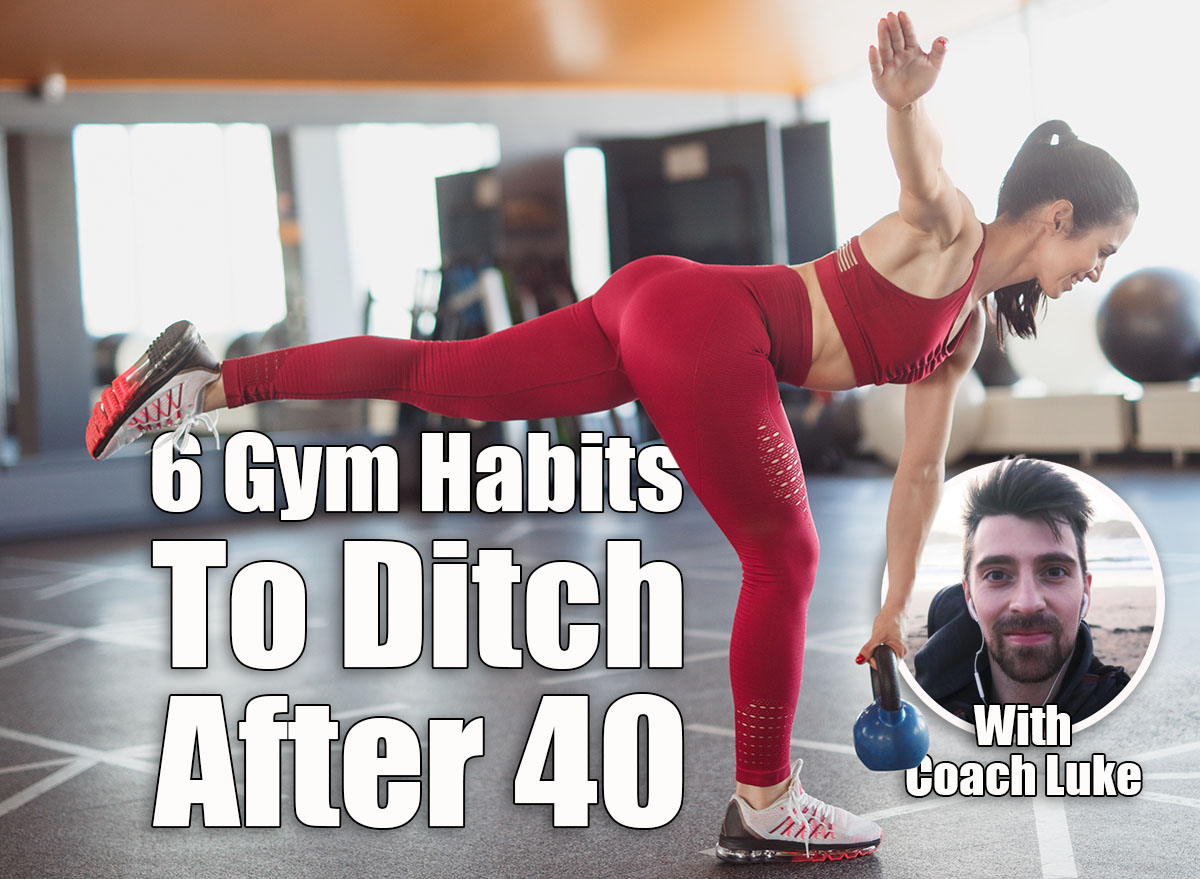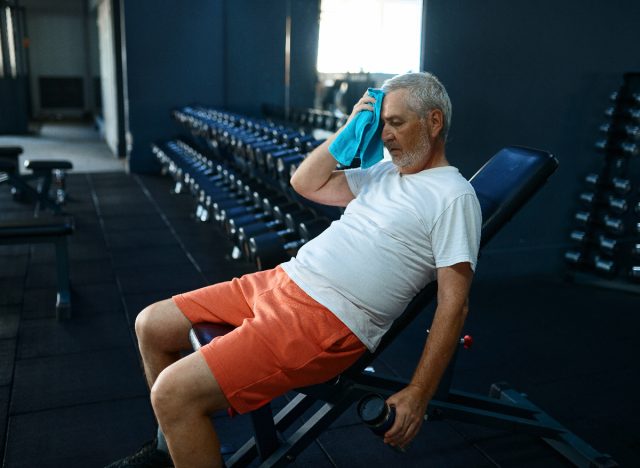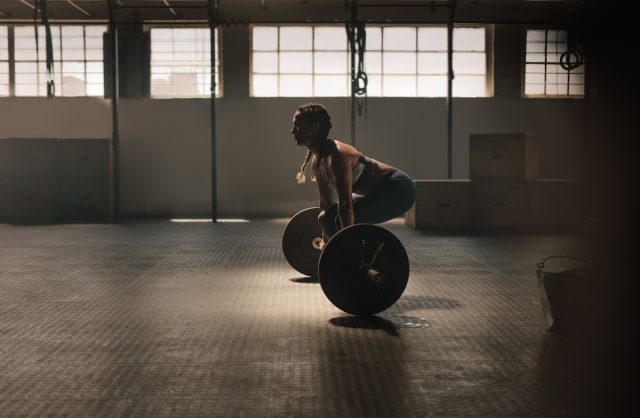If You’re Still Training Like This at 40, You’re Damaging Your Body

It’s always important to stay up-to-date on ways to improve and enhance your workout routine and overall wellness. We looked into six gym habits you may be doing that are harmful after 40. Let’s see if any of these sound familiar. We spoke with Luke Jones, certified personal trainer at HERO Movement, who feels the biggest mistake made is training like you’re 25 when you’re actually 40. Your body is very different in this stage of life—and your workout should reflect that.
“The main challenge for most people is recovery. It’s not that you can’t train hard, but your body may need a little more time between intense sessions,” Luke points out. “Hormonal shifts, slower tissue repair, and reduced joint lubrication all mean that the “go hard or go home” mentality can backfire. What worked brilliantly at 25 might now lead to chronic soreness, plateaus, or even injuries. That said, your body is still incredibly capable-it just needs a bit more care and attention. The goal isn’t to pull back out of fear, but to train smarter, so you can stay consistent and injury-free.”
Although that’s the biggest bad habit, there are more.
Pushing Every Set to the Limit

It’s essential to pace yourself and understand your limitations.
“Pushing every set to the limit can feel productive, but over time, it can place unnecessary stress on the joints, connective tissues and nervous system,” says Luke. “Recovery takes a little longer as we age, and constantly flirting with burnout can stall progress instead of speeding it up.”
Skipping Warm-Ups and Mobility Work

Everyone needs to warm up before a workout; not doing so puts you at risk of sustaining injury. Keep in mind, if you get injured, you won’t be exercising for a while.
“Rushing into training without properly prepping the body can increase injury risk, especially for joints like the shoulders, knees, and spine,” Luke warns. “A few minutes of movement prep can go a long way toward better performance and fewer setbacks!”
Following a Plan That Doesn’t Fit Your Abilities

It’s essential to know your abilities, including performance level and limitations.
“Many gym-goers follow generic online programs or intense workouts designed for younger athletes,” Luke tells us. “But after 40, things like recovery capacity, mobility, and injury history vary widely—training should reflect that, not ignore it.”
Avoiding Unilateral Training

As you age, it’s increasingly necessary to assess your workout and tweak your routine. Little changes can make a big difference in your performance and results.
“There’s still plenty of room to chase the big bilateral lifts—deadlifts, squats, presses—if that’s your thing,” says Luke. “But while asymmetries aren’t something to panic about, they can accumulate as we age. Incorporating more single-leg and single-arm work, and moving through different planes—lateral lunges, rotations, that sort of thing—can help maintain balance, support joint health, and ultimately help you get more out of your big lifts (and everything else you do in day-to-day life).”
Ignoring Recovery

As previously mentioned, recovery is king when it comes to a solid workout plan. Don’t skip rest days and recovery sessions—ever.
“Mobility drills, foam rolling, and active rest days often get skipped in favor of squeezing in another tough workout,” Luke explains. “But building them in is essential for managing stiffness, supporting tissue health, and staying consistent.”
Over-Prioritizing Heavy Lifting

One habit that can easily get overlooked in performing workouts is prioritizing quality over quantity.
“Chasing personal bests week after week is great for motivation, but can be hard on the joints over time,” Luke states. “A more sustainable approach involves rotating load, tempo, and intent to build strength without burnout. Consistency over intensity.”